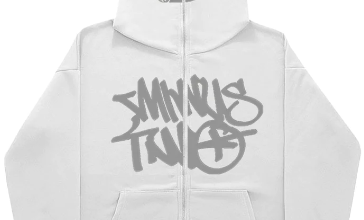
When it comes to bedding, comforters often take center stage. They are an essential part of creating a cozy and inviting bed, but many people may not fully understand what a comforter is, how to choose the right one, or how it differs from other bedding options like duvets. This guide covers everything you need to know about comforters, from defining what they are to offering tips on caring for them.
What Is a Bed Comforter?
A comforter is a type of blanket that’s typically filled with synthetic fibers, down, or feathers and encased in a fabric shell. It’s designed to be used as the top layer of bedding, providing warmth and comfort throughout the night. Unlike a duvet, which requires a separate cover, comforters are standalone pieces often part of a coordinated bedding set. They come in various designs, colors, and patterns, making them not only functional but also a stylish addition to your bed.
Comforters are popular because they’re ready to use right out of the package. There’s no need to fuss with inserts or covers, which simplifies the process of making your bed. Additionally, comforters often include matching pillow shams or decorative elements, giving your bedroom a polished and cohesive look.
What to Consider When Buying a Comforter?
Choosing the right comforter can significantly impact your sleeping experience. To make the best decision, consider the following factors:
1. Fill Material
The fill material is crucial in determining the warmth and weight of the comforter. Here are some common options:
- Down: Lightweight, soft, and excellent at trapping heat. However, down can trigger allergies in some people.
- Synthetic Fill: Often made from polyester, synthetic fills are hypoallergenic and more affordable but may not offer the same warmth-to-weight ratio as down.
- Feather: Like down, feather comforters are warm and lightweight, but feathers tend to poke through the fabric over time.
- Wool or Cotton: These natural fibers provide breathability and moisture-wicking properties, ideal for warmer climates or people who sleep hot.
2. Warmth Level
Comforters come in different warmth levels, usually categorized as lightweight, medium-weight, or heavyweight. Choose based on your climate and how warm you like to be at night. For example, if you live in a cooler region or prefer a warm, cozy bed, a heavyweight comforter filled with down might be ideal. On the other hand, a lightweight synthetic fill comforter may be more suitable for warmer climates.
3. Size
Make sure to choose the right size comforter for your bed. Comforters typically come in standard sizes such as Twin, Full, Queen, and King, but there are variations depending on the brand. Measure your mattress and factor in how much overhang you want on the sides of the bed.
4. Thread Count
The thread count refers to the number of threads per square inch of fabric. A higher thread count usually means a softer and more durable comforter shell. Comforters with a thread count of 300 or higher are generally considered high quality.
5. Design and Aesthetics
Comforters come in a wide range of colors, patterns, and textures. When selecting one, consider how it will fit into your bedroom décor. You might prefer solid colors for a minimalist look or bold patterns to make a statement.
What Is the Difference Between a Duvet and a Comforter?
The terms “duvet” and “comforter” are often used interchangeably, but they are actually two different types of bedding. Understanding their differences can help you decide which one is right for you. Mattress Protector is another best option to protect mattress.
- Comforter: As mentioned earlier, a comforter is a thick, quilted blanket that’s ready to use without any additional cover. It’s usually part of a bedding set that includes matching pillow shams or bed skirts. Comforters are ideal for people who want a simple, all-in-one solution for their bed.
- Duvet: A duvet, on the other hand, is a fluffy blanket that requires a removable cover. The duvet itself is typically plain white or neutral, while the cover can be easily changed for a fresh look. Duvets are more versatile because you can swap covers according to your preferences or the season. However, they do require more upkeep since you’ll need to regularly wash the cover.
The primary distinction is that a comforter is a standalone piece, whereas a duvet consists of two parts: the insert and the cover. Comforters are generally easier to manage, but duvets offer more flexibility in terms of design and maintenance.
How to Wash a Comforter?
Proper care is essential to maintain the quality and longevity of your comforter. Comforters are bulky, so washing them can seem intimidating, but it’s necessary to keep them clean and fresh. Follow these steps for optimal care:
1. Check the Care Label
Always refer to the manufacturer’s care label for specific washing instructions. Some comforters may be machine washable, while others might require professional cleaning.
2. Use a Large-Capacity Washer
If your comforter is machine-washable, ensure you have access to a large-capacity washer to accommodate its size. Many home washers aren’t big enough, so you may need to visit a laundromat or use a front-loading machine.
3. Choose a Gentle Detergent
Use a mild, gentle detergent to preserve the fabric and fill material. Avoid using bleach or harsh chemicals, which can damage the fibers.
4. Wash in Cold Water
Opt for a cold water cycle to prevent shrinkage or damage to the comforter’s fill. Hot water may break down synthetic materials or cause down feathers to clump together.
5. Dry Properly
Drying a comforter is crucial to prevent mildew or clumping. Place the comforter in a large dryer on a low-heat setting. Adding a few clean tennis balls or dryer balls can help keep the fill evenly distributed during the drying process. Make sure the comforter is completely dry before placing it back on your bed, as damp spots can lead to mold growth.
6. Fluff Regularly
To maintain its loft, fluff your comforter every few days. This helps redistribute the fill material and keeps the comforter feeling plush.
Conclusion
A comforter is a versatile, all-in-one bedding solution that combines comfort, warmth, and style. When shopping for a comforter, consider factors like fill material, warmth level, and design to find the perfect match for your needs. By understanding the differences between a comforter and a duvet, you can make an informed decision that enhances your sleep experience. With proper care, your comforter will remain a cozy and stylish part of your bedroom for years to come.



